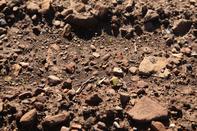In South Africa weeds need to be managed carefully to prevent them from causing production losses, by overshadowing your crop and competing for resources such as water and soil nutrients.

Failure to control them will exacerbate weed problems by resulting in weed seeds, referred to as the seed bank, increasing in the soil. For the best results, farmers should, therefore, plant in a clean land and keep it clean throughout the season.
Mechanical Measures
Weeds can be removed by hand if you have a small strip of grain, but this will be too labour intensive if your farm is any bigger. Farmers also used to plough their lands, and some still do, before planting to prepare a clean seedbed.
Ploughing, however, greatly increases fuel costs, and over time causes erosion and destroys the soil structure, which has a negative impact on the soil’s water holding capacity.
The ideal is, therefore, to rather make use of conservation farming practices that help to build a healthy production environment by improving the soil structure.
Burning
Farmers used to burn grain land after harvesting to destroy weeds and disease-causing organisms.
The practice has greatly faded away, not only because of the fire hazard, but also because of the growing awareness of the negative impact this has on beneficial soil organisms.
Today, the burning of land is really seen as a last resort and only when a farmer experiences extreme problems with herbicide-resistant weeds.
Herbicides
Growing awareness of the negative impact of ploughing on soil health and structure has led to the rise of conservation farming. In conservation farming, farmers try to stay away from burning and ploughing the land, which has made them more dependent on herbicides for weed management.
They are therefore much more dependent on pre-emergent herbicides to inhibit the germination of weed seeds that are dormant during planting and post-emergent herbicides to keep land weed-free after planting. The biggest drawback of this is that poor management can result in herbicide resistance.
So care should be taken to use herbicides strictly according to instructions and to rotate herbicide applications according to their active ingredients. Farmers are bound to run into trouble if they use the same herbicide again and again with nothing else in between.
When new chemistry becomes available, farmers should also “protect” the efficiency of these products and only use them as a last resort. Besides this, the right herbicide needs to be used on the right crops, as herbicides are specifically formulated to either control broad-leaved weeds, grasses or a mixture of these.
Crops, such as wheat, maize, barley, sugarcane, oats or even maize will be destroyed if you spray grass herbicides on them, whereas broadleaf herbicides will destroy crops, such as canola, sunflowers and medics.
The best thing to do is to talk to a chemical advisor to help you draw up a good weed management programme and to regularly adapt this to accommodate new developments and different climatic conditions.
By Glenneis Kriel